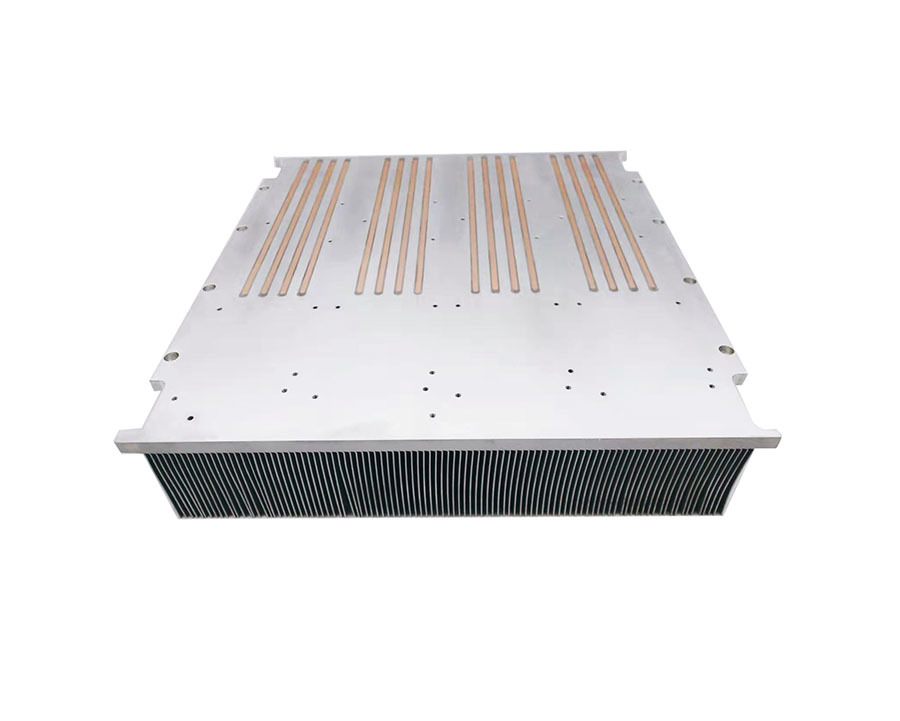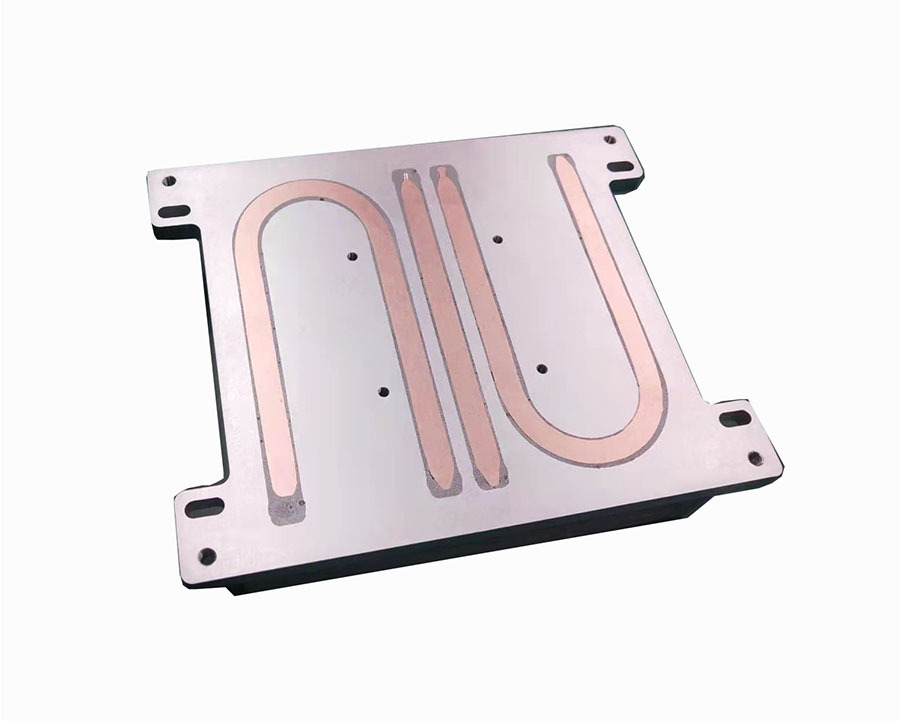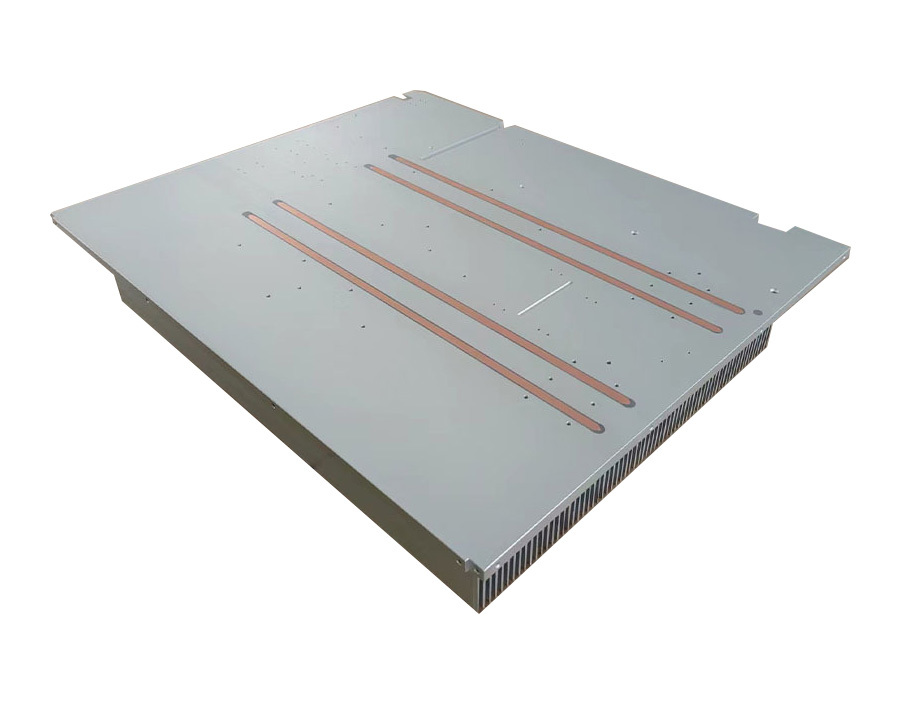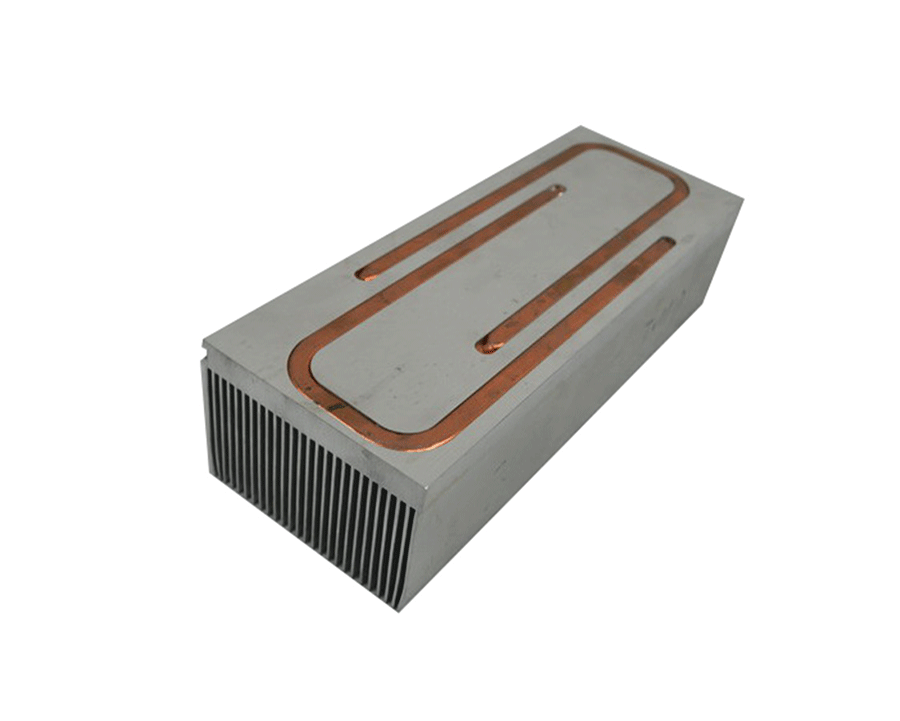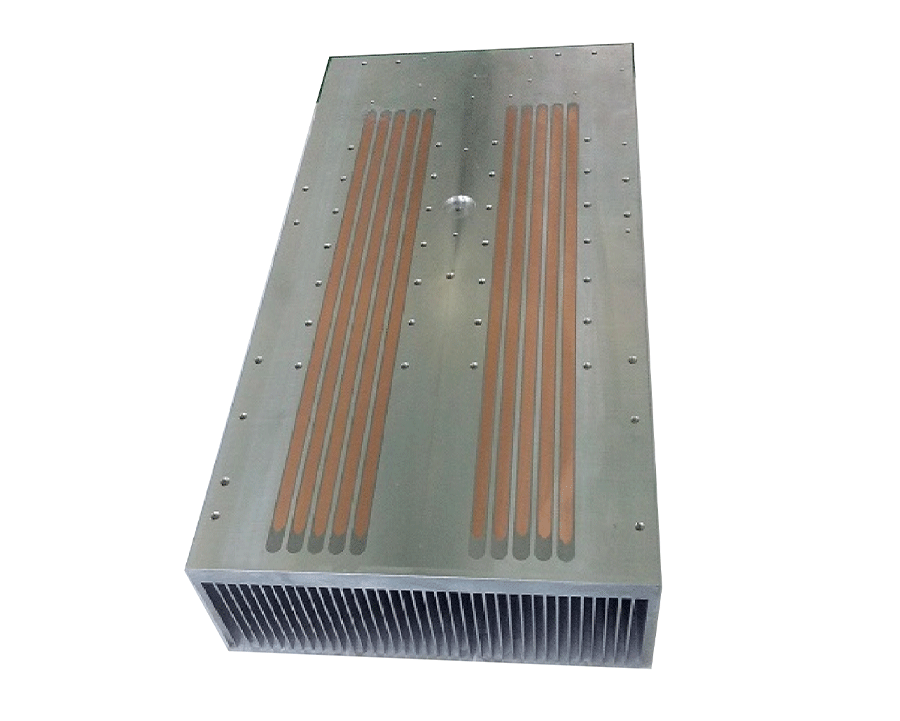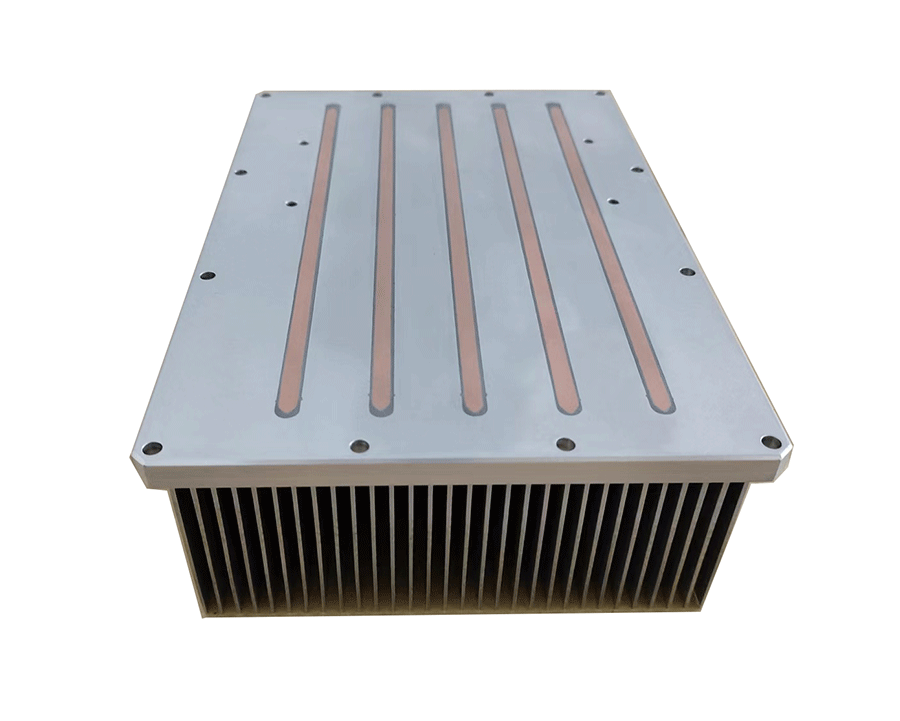Heat Pipe Heat Sinks
There are many types of processing methods for heat pipe radiators, including soldered or pressing cooling fins heat pipes. Vansim willing to provide you with the most cost-effective heat pipe heatsink in our factory.
Heat Pipe Heat Sinks
Process introduction:
As the heating power of the device becomes higher and higher, the heat flux density of the heating device increases rapidly, and the rapid heat dissipation of the heating device has become an important part of the product heat dissipation; it is difficult for the conventional radiator substrate to quickly conduct a large amount of heat, and it is necessary to use a high thermal conductivity material combined with the radiator to solve this problem. Therefore, the combination of heat pipe and radiator, the heat pipe radiator, came into being.
The heat pipe is a heat transfer element with extremely high thermal conductivity. It transfers heat through the vapor and liquid phase change of the working fluid in a fully enclosed vacuum tube, and is known as a "thermal superconductor". The heat pipe is embedded in the radiator substrate by riveting, the edge of the heat pipe can be filled with epoxy resin, the substrate surface is machined flat, and the surface is processed into a radiator.

Principle of buried pipe

Buried heat pipe cross section
Design Parameters
According to the process of the main structure of the radiator, the buried heat pipe heat sink can be divided into: skived heat pipe heatsink, profile heat pipe heatsink, bonded heat pipe heatsink.
The common heat pipe diameters of buried pipe process are: Φ6mm, Φ8mm, Φ9.5mm,Φ10mm,Φ12mm.
Since the invention of heat pipes, there have been new developments on the cooling systems of electronics. Whatever approach we use for cooling, the ultimate cooling medium is air and all of the other media are simply intermediate. The free convection cooling of air is the most direct and simple approach. Heat pipes are capable of quickly increasing the application area of self cooling. Since a heat pipe self-cooling system does not need any fan, it generates no noise and it doesn’t require maintenance so it’s safe and reliable. Heat pipe air cooling or self cooling can even replace water cooling systems so as to reserve water resources and the investment on relevant auxiliary equipment. Moreover, the heat pipe cooling approach allows the heat-dissipating devices to be concentrated and even sealed. This allows the cooling parts to be relocated to the exterior or in the distance so as to enhance the safety, reliability, and application range of electronic equipment and realize the dust-proof, damp-proof, and explosion-proof requirements.

Working Principle of Heat Pipe
Why we have cost advantage? The entire production and processing of Vansim's buried heat pipe heatsinks is completed in-house.
Contact Us >>
Application status:
The friction welding radiator uses small-size mold extrusion splicing to achieve ultra-large width aluminum profile radiator, which increases the extrusion ratio. At the same time, the small mold also greatly reduces the mold cost, shortens the development cycle and increases the stability of the mold.
Buried heat pipe heatsinks applied for inverters of Charging Point
Charging point heat dissipation mechanism and its importance: What are the risks that heat accumulation may bring?
The specific application of heat pipe heatsink in charging point is: the heat absorbing plate is closely fitted or close to the heating components inside the charging pile, and the heat is transferred to the condensation end through the heat pipe technology, and then the heat is dissipated into the air through the heatsink. This design not only improves the heat dissipation efficiency, but also avoids the entry of pollutants such as dust, ensuring the cleanliness and safety of the charging pile.
The advantages of heat pipe heat sinks include high thermal conductivity, good heat dissipation performance and long life. It can work stably under high power conditions and is suitable for high-load equipment such as charging piles. By using heat pipe radiators, the heat dissipation problem of charging piles has been effectively solved, thereby improving the overall operating efficiency and safety.



Heat pipe heat sinks in the power electronics field can be classified as follows according to the techniques used.
Skived Fin + Heat pipe:
Heat pipe heat sinks in the power electronics field can be classified as follows according to the techniques used.
Extrusion Profile + Heat pipe:






